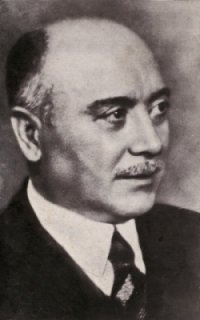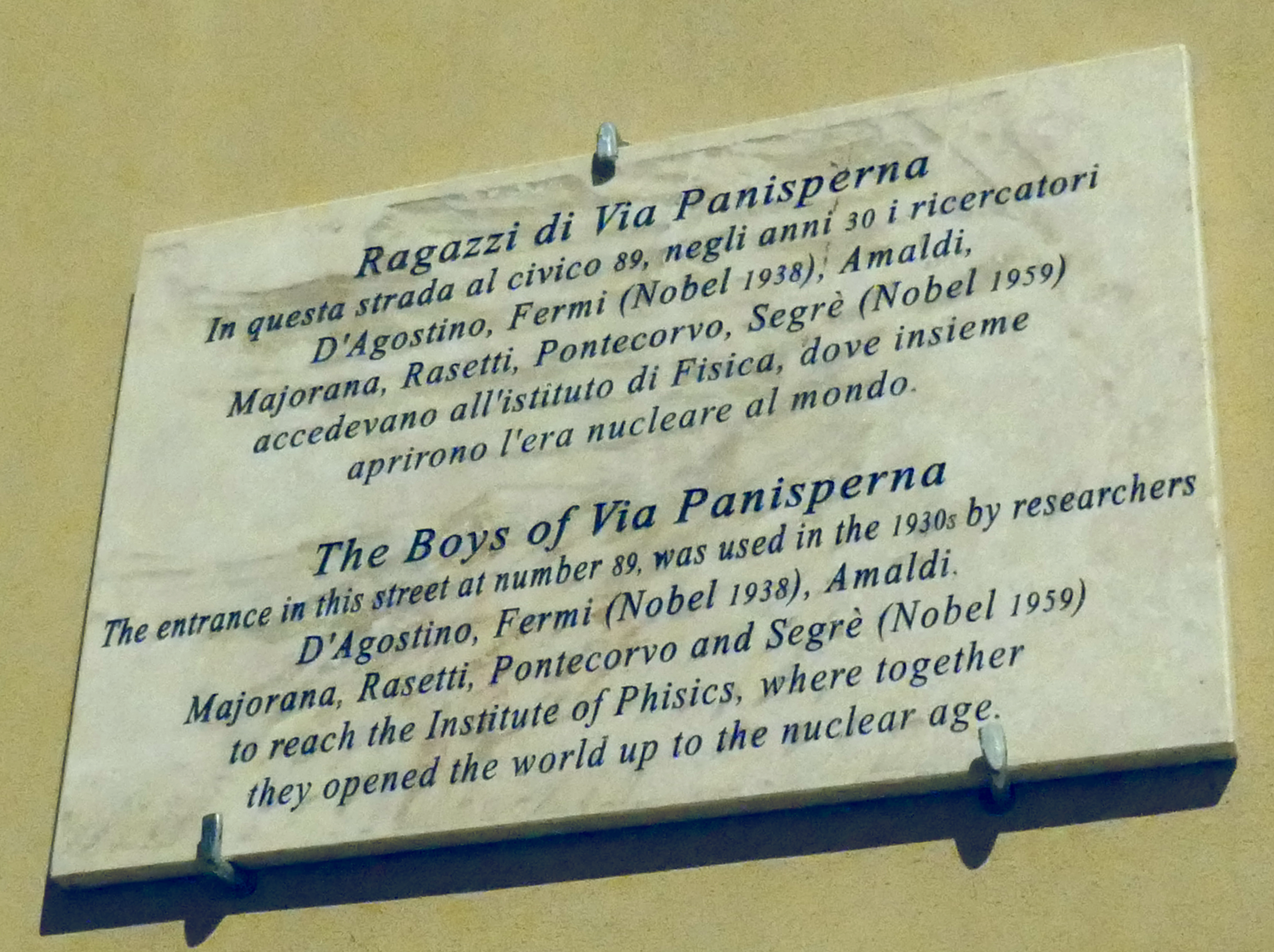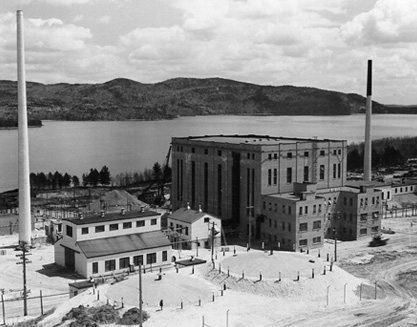|
Orso Mario Corbino
Orso Mario Corbino (30 April 1876, Augusta – 23 January 1937, Rome) was an Italian physicist and politician. His younger brother was Epicarmo Corbino. He served as the minister for education in 1921 and as the minister for economy in 1921. He also served as professor in Messina (1905) and in Rome (1908). He is noted for his studies of the influence of external magnetic fields on the motion of electrons in metals and he discovered the Corbino effect. Corbino worked with Damiano Macaluso where they discovered the Macaluso-Corbino effect, a strong magneto-rotation of the plane of polarization observed at wavelengths close to an absorption line of the material through which the light is travelling. As director of the Institute of physics he was the supervisor of Enrico Fermi, Edoardo Amaldi, Franco Rasetti, Emilio Segrè, Bruno Pontecorvo, Oscar D'Agostino, Ettore Majorana, and Elena Freda. Works * * See also * Via Panisperna boys Via Panisperna boys (Italian: ''I r ... [...More Info...] [...Related Items...] OR: [Wikipedia] [Google] [Baidu] |
Orso Mario Corbino
Orso Mario Corbino (30 April 1876, Augusta – 23 January 1937, Rome) was an Italian physicist and politician. His younger brother was Epicarmo Corbino. He served as the minister for education in 1921 and as the minister for economy in 1921. He also served as professor in Messina (1905) and in Rome (1908). He is noted for his studies of the influence of external magnetic fields on the motion of electrons in metals and he discovered the Corbino effect. Corbino worked with Damiano Macaluso where they discovered the Macaluso-Corbino effect, a strong magneto-rotation of the plane of polarization observed at wavelengths close to an absorption line of the material through which the light is travelling. As director of the Institute of physics he was the supervisor of Enrico Fermi, Edoardo Amaldi, Franco Rasetti, Emilio Segrè, Bruno Pontecorvo, Oscar D'Agostino, Ettore Majorana, and Elena Freda. Works * * See also * Via Panisperna boys Via Panisperna boys (Italian: ''I r ... [...More Info...] [...Related Items...] OR: [Wikipedia] [Google] [Baidu] |
Emilio Segrè
Emilio Gino Segrè (1 February 1905 – 22 April 1989) was an Italian-American physicist and Nobel laureate, who discovered the elements technetium and astatine, and the antiproton, a subatomic antiparticle, for which he was awarded the Nobel Prize in Physics in 1959 along with Owen Chamberlain. Born in Tivoli, near Rome, Segrè studied engineering at the University of Rome La Sapienza before taking up physics in 1927. Segrè was appointed assistant professor of physics at the University of Rome in 1932 and worked there until 1936, becoming one of the Via Panisperna boys. From 1936 to 1938 he was director of the Physics Laboratory at the University of Palermo. After a visit to Ernest O. Lawrence's Berkeley Radiation Laboratory, he was sent a molybdenum strip from the laboratory's cyclotron accelerator in 1937, which was emitting anomalous forms of radioactivity. After careful chemical and theoretical analysis, Segrè was able to prove that some of the radiation was being pro ... [...More Info...] [...Related Items...] OR: [Wikipedia] [Google] [Baidu] |
Mussolini Cabinet
The Mussolini government was the longest-serving government in the history of united Italy. The Cabinet administered the country from 31 October 1922 to 25 July 1943, for a total of 7,572 days, or 20 years, 8 months and 25 days. On taking office, the government was composed by members from National Fascist Party, Italian People's Party, Social Democracy, Italian Liberal Party, Italian Nationalist Association and other independent politicians. However, since 1 July 1924, all other parties were purged and the government was composed exclusively of Fascists, except for a few military officers. The government fell following the approval of the Grandi agenda by the Grand Council of Fascism on 25 July 1943. Investiture vote On October 29, 1922 Benito Mussolini was commissioned by King Victor Emmanuel III to form a new government after leading the March on Rome. The government obtained confidence in the Chamber of Deputies on November 17, 1922, with 306 votes in favor, 116 agains ... [...More Info...] [...Related Items...] OR: [Wikipedia] [Google] [Baidu] |
1937 Deaths
Events January * January 1 – Anastasio Somoza García becomes President of Nicaragua. * January 5 – Water levels begin to rise in the Ohio River in the United States, leading to the Ohio River flood of 1937, which continues into February, leaving 1 million people homeless and 385 people dead. * January 15 – Spanish Civil War: Second Battle of the Corunna Road ends inconclusively. * January 20 – Second inauguration of Franklin D. Roosevelt: Franklin D. Roosevelt is sworn in for a second term as President of the United States. This is the first time that the United States presidential inauguration occurs on this date; the change is due to the ratification in 1933 of the Twentieth Amendment to the United States Constitution. * January 23 – Moscow Trials: Trial of the Anti-Soviet Trotskyist Center – In the Soviet Union 17 leading Communists go on trial, accused of participating in a plot led by Leon Trotsky to overthrow Joseph Stalin's regime, and assa ... [...More Info...] [...Related Items...] OR: [Wikipedia] [Google] [Baidu] |
1876 Births
Events January–March * January 1 ** The Reichsbank opens in Berlin. ** The Bass Brewery Red Triangle becomes the world's first registered trademark symbol. * February 2 – The National League of Professional Base Ball Clubs is formed at a meeting in Chicago; it replaces the National Association of Professional Base Ball Players. Morgan Bulkeley of the Hartford Dark Blues is selected as the league's first president. * February 2 – Third Carlist War – Battle of Montejurra: The new commander General Fernando Primo de Rivera marches on the remaining Carlist stronghold at Estella, where he meets a force of about 1,600 men under General Carlos Calderón, at nearby Montejurra. After a courageous and costly defence, Calderón is forced to withdraw. * February 14 – Alexander Graham Bell applies for a patent for the telephone, as does Elisha Gray. * February 19 – Third Carlist War: Government troops under General Primo de Rivera drive throu ... [...More Info...] [...Related Items...] OR: [Wikipedia] [Google] [Baidu] |
Via Panisperna Boys
Via Panisperna boys (Italian: ''I ragazzi di Via Panisperna'') is the name given to a group of young Italian scientists led by Enrico Fermi, who worked at the Royal Physics Institute of the University of Rome La Sapienza. In 1934 they made the famous discovery of slow neutrons, which later made possible the nuclear reactor and then the construction of the first atomic bomb. The nickname of the group comes from the address of the Institute, located in a street of Rione Monti in the city centre, which got its name from a nearby monastery, San Lorenzo in Panisperna. The other members of the group were Edoardo Amaldi, Oscar D'Agostino, Ettore Majorana, Bruno Pontecorvo, Franco Rasetti and Emilio Segrè. All were physicists, except for D'Agostino, who was a chemist. The growth of the group The group grew under the supervision of the physicist, minister, senator and director of the Institute of Physics Orso Mario Corbino. Corbino recognized the qualities of Enrico Fermi and led ... [...More Info...] [...Related Items...] OR: [Wikipedia] [Google] [Baidu] |
Elena Freda
Elena Freda (25 March 1890 – 25 November 1978) was an Italian mathematician and mathematical physicist known for her collaboration with Vito Volterra Vito Volterra (, ; 3 May 1860 – 11 October 1940) was an Italian mathematician and physicist, known for his contributions to mathematical biology and integral equations, being one of the founders of functional analysis. Biography Born in Anc ... on mathematical analysis and its applications to electromagnetism and biomathematics. Life Freda was born on 25 March 1890. She studied projective geometry with Guido Castelnuovo at the Sapienza University of Rome, graduating in 1912, but then shifted her interests to mathematical physics, working with Orso Mario Corbino and earning a second degree in physics from Sapienza University in 1915. Her earliest documented connection to Vito Volterra is also from 1915, in the form of a letter from Freda to Volterra with the date 23 September 1915, describing her work. Military history of ... [...More Info...] [...Related Items...] OR: [Wikipedia] [Google] [Baidu] |
Ettore Majorana
Ettore Majorana (,, uploaded 19 April 2013, retrieved 14 December 2019 ; born on 5 August 1906 – possibly dying after 1959) was an Italian theoretical physicist who worked on neutrino masses. On 25 March 1938, he disappeared under mysterious circumstances after purchasing a ticket to travel by ship from Palermo to Naples. The Majorana equation and Majorana fermions are named after him. In 2006, the Majorana Prize was established in his memory. Life and work In 1938, Enrico Fermi was quoted as saying about Majorana: "There are several categories of scientists in the world; those of second or third rank do their best but never get very far. Then there is the first rank, those who make important discoveries, fundamental to scientific progress. But then there are the geniuses, like Galilei and Newton. Majorana was one of these." Gifted in mathematics Majorana was born in Catania, Sicily. Mathematically gifted, he was very young when he joined Enrico Fermi's team in Rome a ... [...More Info...] [...Related Items...] OR: [Wikipedia] [Google] [Baidu] |
Oscar D'Agostino
Oscar D'Agostino (29 August 1901 – 16 March 1975) was an Italian chemist and one of the so-called ''Via Panisperna boys'', the group of young scientists led by Enrico Fermi: all of them were physicists, except for D'Agostino, who was a chemist. In 1934 he contributed to Fermi's experiment (that gave Fermi the possibility to win the Nobel Prize in 1938) to showing the properties of slow neutrons. That led the way to the discovery of nuclear fission, and later on to the construction of the first atomic bomb. Bibliography * O. D'Agostino: ''Il chimico dei fantasmi''. Mephite, 2002 See also *Radioactive decay *Nuclear chain reaction *Slow neutron *Via Panisperna boys *Enrico Fermi Enrico Fermi (; 29 September 1901 – 28 November 1954) was an Italian (later naturalized American) physicist and the creator of the world's first nuclear reactor, the Chicago Pile-1. He has been called the "architect of the nuclear age" and ... External links Enrico Fermi and the Via Panis ... [...More Info...] [...Related Items...] OR: [Wikipedia] [Google] [Baidu] |
Bruno Pontecorvo
Bruno Pontecorvo (; russian: Бру́но Макси́мович Понтеко́рво, ''Bruno Maksimovich Pontecorvo''; 22 August 1913 – 24 September 1993) was an Italian and Soviet nuclear physicist, an early assistant of Enrico Fermi and the author of numerous studies in high energy physics, especially on neutrinos. A convinced communist, he defected to the Soviet Union in 1950, where he continued his research on the decay of the muon and on neutrinos. The prestigious Pontecorvo Prize was instituted in his memory in 1995. The fourth of eight children of a wealthy Jewish-Italian family, Pontecorvo studied physics at the University of Rome ''La Sapienza'', under Fermi, becoming the youngest of his Via Panisperna boys. In 1934 he participated in Fermi's famous experiment showing the properties of slow neutrons that led the way to the discovery of nuclear fission. He moved to Paris in 1934, where he conducted research under Irène and Frédéric Joliot-Curie. Influence ... [...More Info...] [...Related Items...] OR: [Wikipedia] [Google] [Baidu] |
Franco Rasetti
Franco Dino Rasetti (August 10, 1901 – December 5, 2001) was an Italian (later naturalized American) physicist, paleontologist and botanist. Together with Enrico Fermi, he discovered key processes leading to nuclear fission. Rasetti refused to work on the Manhattan Project on moral grounds. Life and career Rasetti was born in Castiglione del Lago, Italy. He earned a ''Laurea'' in physics at the University of Pisa in 1923, and Fermi invited him to join his research group at the University of Rome. In 1928-1929 during a stay at the California Institute of Technology (Caltech), he carried out experiments on the Raman effect. He measured a spectrum of dinitrogen in 1929 which provided the first experimental evidence that the atomic nucleus is not composed of protons and electrons, as was incorrectly believed at the time. [...More Info...] [...Related Items...] OR: [Wikipedia] [Google] [Baidu] |







